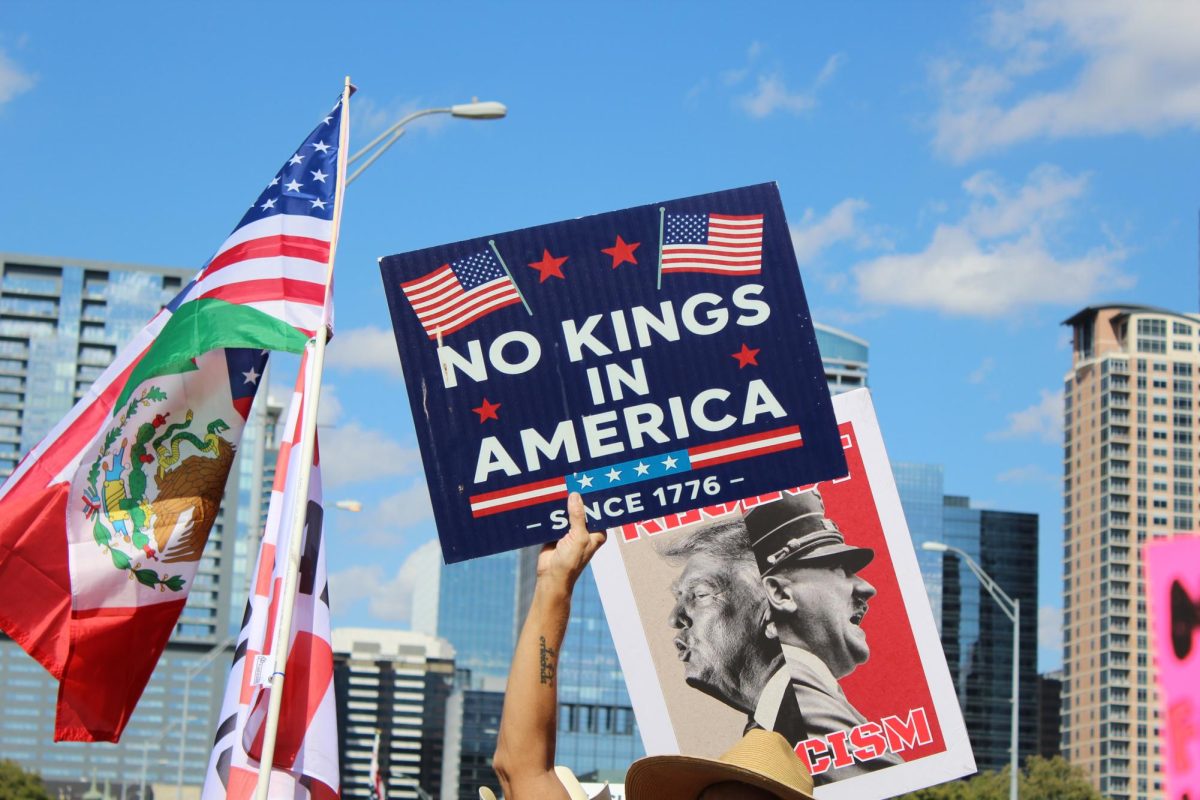A new generation of smokers has arisen, but it’s not from traditional cigarettes. Electronic cigarettes, E-cigarettes or vapes have become increasingly popular over the past decade with a rise seen especially in adolescents. While there are many reasons that could be attributed to this trend, one specific reason is the way these products are advertised — often with target audiences being minors.
“None of this happens on accident,” said Chris Barnard, a McCallum parent and advertising creative director. “Everything, especially at that scale is heavily researched. I’ve worked on countless alcohol brands in the past, and so much of the regulation in categories like that is self-imposed. Through their market research, they have a really good sense of what audience opportunities there are, and what they need to create from a product standpoint to get that audience. So the idea of ‘Oh, we had no idea kids love this’ is BS.”
Most recently, Juul, a company that dominated the e-cigarette industry, agreed to pay $438.5 million in a settlement with 33 states and one territory in a lawsuit over marketing its product to teens.
“Before they make a huge, typically multimillion dollar investment into new product, or even a new flavor of a product, they’re going to put time and the money into making sure that people actually want that product, and that it’s going to be successful,” Barnard said. “I can’t imagine that someone like Juul wouldn’t have done their own research and not realized, kids really liked this [product].”
According to the National Youth Tobacco Survey, 84.5% of youths who said they had vaped recently reported that they used flavored e-cigarettes, most commonly with fruity or sweet flavors. Barnard expresses concern that this flavoring could be a reason vape products appeal more to teenagers.
“There’s like all these bizarre flavors that sound like a candy shop,” Barnard said. “Years ago, there were alcohol brands, called Alcopops. They were like really sweet, really sugary malt liquors, basically, that were targeting kids. They had to really dial back some of those flavors because it was basically like an alcoholic Jolly Rancher. So I wonder if that’s part of it, too. The types of flavors that they’re innovating and bringing to market don’t seem like the kind of things that a 45-year-old smoker would like; it seems like the kind of thing that a teenager would like.”
The prevalence of teen vaping isn’t new. Rates more than doubled from 2017 to 2019 and about 69 percent of middle and high school students were exposed to e-cigarette ads in retail stores, on the Internet, in magazines/ newspapers, or on TV/movies in 2014.
“It’s newer, and made to seem cooler, I guess,” health teacher Nancy Searle said, “and I think the flavors are definitely what kind of pushes it over. They kind of came about to help people as an alternative to smoking and help them quit smoking. But the fact that we’ve got a lot of teens who have never smoked, but yet they’re buying it just shows that it’s not being used in that way.”
One way of dissuading teens to purchase nicotine products is through warning labels. Although cigarettes have been required to have a warning label on their packaging since 1969, electronic cigarettes have only been required to carry a warning label since 2018.
“In some countries like Canada, they actually show cancerous lungs on cigarette packaging,” Barnard said. “They’ve included imagery on packaging that really shows the dangers of smoking. They haven’t gone that far here yet.”
Much of this regulations disparity comes from the novelty of electronic cigarettes compared to their traditional counterparts and the ever-evolving modern media.
“It’s much more difficult to [regulate] now than it used to be because media is so fragmented,” Barnard said. “It used to be really easy to go, ‘Oh, kids watch cartoons Saturday mornings, so we’re not going to advertise on these programs.’ But now you have these media ads that are so targeted, they’re so specific. It’s showing up on social media platforms, showing up on YouTube videos, and it’s showing up sometimes as content in ways that doesn’t even look like an ad.”
Although the FDA has rules against nicotine companies marketing to underage users, there are loopholes on social media platforms like TikTok, which is primarily used by minors.
“I think that they’re gonna aim it at the weakest people, the ones who are more susceptible to falling for those ads,” Searle said. “I feel like the more we tell them, ‘Don’t do it,’ the more they’re gonna try it, which is hard. I think kids feel like they’re invincible, and it’s not gonna affect them, as much as we do talk about the negative effects of smoking, whether it’s E-cigs or cigarettes or anything else.”
Because of the personalized nature of ads on social media platforms, not everyone receives the same content. This makes it difficult for such advertisements to be regulated and for parents to know what content their child is seeing.
“People don’t really even know what their kids are being exposed to anymore,” Barnard said, “so I think [the essential step is] tightening the regulations and probably moving regulations towards a more modern time, something that updates those regulations for the way that media is consumed now, and will continue to be consumed.”








